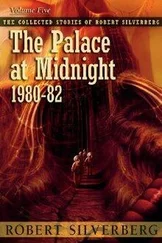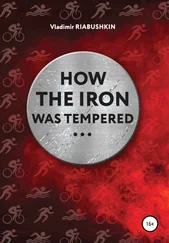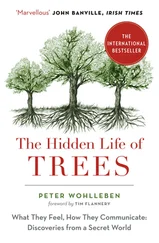Kermit Heartsong - Ukraine - ZBIG's Grand Chess Board & How The West Was Checkmated
Здесь есть возможность читать онлайн «Kermit Heartsong - Ukraine - ZBIG's Grand Chess Board & How The West Was Checkmated» весь текст электронной книги совершенно бесплатно (целиком полную версию без сокращений). В некоторых случаях можно слушать аудио, скачать через торрент в формате fb2 и присутствует краткое содержание. Год выпуска: 2015, Жанр: Политика, на английском языке. Описание произведения, (предисловие) а так же отзывы посетителей доступны на портале библиотеки ЛибКат.
- Название:Ukraine: ZBIG's Grand Chess Board & How The West Was Checkmated
- Автор:
- Жанр:
- Год:2015
- ISBN:нет данных
- Рейтинг книги:4 / 5. Голосов: 1
-
Избранное:Добавить в избранное
- Отзывы:
-
Ваша оценка:
- 80
- 1
- 2
- 3
- 4
- 5
Ukraine: ZBIG's Grand Chess Board & How The West Was Checkmated: краткое содержание, описание и аннотация
Предлагаем к чтению аннотацию, описание, краткое содержание или предисловие (зависит от того, что написал сам автор книги «Ukraine: ZBIG's Grand Chess Board & How The West Was Checkmated»). Если вы не нашли необходимую информацию о книге — напишите в комментариях, мы постараемся отыскать её.
Ukraine: ZBIG's Grand Chess Board & How The West Was Checkmated — читать онлайн бесплатно полную книгу (весь текст) целиком
Ниже представлен текст книги, разбитый по страницам. Система сохранения места последней прочитанной страницы, позволяет с удобством читать онлайн бесплатно книгу «Ukraine: ZBIG's Grand Chess Board & How The West Was Checkmated», без необходимости каждый раз заново искать на чём Вы остановились. Поставьте закладку, и сможете в любой момент перейти на страницу, на которой закончили чтение.
Интервал:
Закладка:
Furthermore, R2P campaigns are often undertaken in order to address problems that were created by imperialist or colonialist powers to begin with. This dynamic is being played out at the time of this writing as President Barak Obama has ordered military airstrikes and an increase in forces to protect the northern city of Erbil from advances by Islamic State of Iraq and Syria (ISIS) fighters and to help the thousands of people belonging to the Yazidi religious sect that are reportedly stranded on a mountain in the middle of hostilities (Queally 2014). It should be noted, however, that the Kurdish territory in which Erbil is situated is home to 25 percent of Iraq's oil reserves (Democracy Now 2014). For those who argue that this is a cynical statement about the US’s true motives, one can rest assured that the US will “incidentally” ensure some kind of direct or indirect control of those nearby oil resources.
By invoking the Responsibility to Protect doctrine Obama is ostensibly addressing a problem that is a result of the US government’s invasion and occupation of Iraq, which created the conditions of a civil war in the first place, in addition to providing support to an armed rebellion in Syria next door in the hopes of overthrowing the Assad regime. A segment of those same rebels eventually became the radicals who joined Islamic State of Iraq (ISI) — a splinter group of Al Qaeda in Iraq — to become Islamic State of Iraq and Syria (Parry 2014).
Acting without congressional authority, Obama has placed no time limit on airstrikes and has authorized the use of military force to defend diplomatic personnel in Erbil instead of evacuating them. At the time of this writing, there are reportedly more than 1,000 US military personnel in Iraq (Democracy Now 2014). These kinds of actions have historically been precursors to deeper and longer military involvement (Queally 2014; McCauley 2014).
Considering the fact that Israel just finished a military campaign that resulted in the deaths of over 2,000 Gazans — the vast majority of which were civilians — as well as the demolition of what little civil infrastructure was left in the area, all without any substantive concern expressed by the US government, much less invoking R2P, it is apparent that the US is picking and choosing which violations of humanitarian laws deserve action. This is all the more pronounced when the invocation of R2P in the case of Israel’s actions in Gaza would not require direct military intervention and the costs associated with it, but only the withholding of the annual $3 billion in aid the US provides Israel each year on the condition that Israel stop violating international law. Additionally, the US could decide not to continue using its veto power at the UN to shield an increasingly defiant Israel from the consequences of its actions. Neither of these approaches would cost the US blood or treasure.
Origins of R2P
The Responsibility to Protect doctrine was inspired, in large part, by the failure of the international community to stop the genocide in Rwanda in 1994 and controversy over NATO's “humanitarian” actions in the Balkans in that same decade. Subsequently, then Secretary General of the UN Kofi Annan sought guidance and clarification on when the international community should intervene for humanitarian purposes.
R2P later emerged from the report of the International Commission on Intervention and State Sovereignty (ICISS) in December of 2001. The commission had a thorny issue to deal with as it involved the principle of state sovereignty and when it may presumably be breached for humanitarian reasons, namely genocide. It is recognized that the Iraq War of 2003 dealt a setback to R2P, as a partial justification proffered for that war was humanitarian intervention. Subsequent humanitarian disasters in Darfur, however, kept interest in R2P alive and attempts were made to revise and clarify the doctrine.
What emerged by 2005 at the World Summit was an agreement by the heads of states and governments to three general ideas. Those three ideas evolved into the Three Pillars of the Responsibility to Protect doctrine unveiled by the Secretary General of the UN Ban Ki-Moon in his 2009 report, “Implementing the Responsibility to Protect”:
Pillar One: States have the primary responsibility to protect their populations from genocide, war crimes, ethnic cleansing and crimes against humanity;
Pillar Two: addresses the commitment of the international community to provide assistance to States in building capacity to protect their populations from genocide, war crimes, ethnic cleansing and crimes against humanity and to assisting those which are under stress before crises and conflicts break out; and,
Pillar Three: focuses on the responsibility of the international community to timely and decisive action to prevent and halt genocide, ethnic cleansing, war crimes and crimes against humanity when a state is manifestly failing to protect its populations. (Greppi 2009)
A resolution of the UN General Assembly was introduced in September of 2009 and it was agreed by that body to continue consideration of R2P. Informal interactive dialogues on the issue have taken place every year since 2010.
Libya — An Abuse of R2P
Despite the noble intentions of most of those behind this doctrine, which is still in the process of becoming a customary norm and is not enshrined in any legally binding treaty, it is not without serious problems and criticisms.
International law expert Marjorie Cohn has expressed concern with the possibilities for abuse of the doctrine by powerful actors, citing its invocation in Libya:
Security Council Resolution 1973 begins with the call for “the immediate establishment of a ceasefire.” It reiterates “the responsibility of the Libyan authorities to protect the Libyan population” and reaffirms that “parties to armed conflicts bear the primary responsibility to take all feasible steps to ensure the protection of civilians. The resolution authorizes UN Member States “to take all necessary measures…to protect civilians and civilian populated areas.”
But instead of pursuing an immediate ceasefire, immediate military action was taken instead. The military force exceeds all bounds of the “all necessary measures” authorization. “All necessary measures” should first have been peaceful measures to settle the conflict. Yet peaceful means were not exhausted before the military invasion began….After passage of the resolution, Libya immediately offered to accept international monitors and Qaddafi offered to step down and leave Libya. These offers were immediately rejected by the opposition. (Cohn 2011)
Moreover, Obama, along with then French President Nicolas Sarkozy and British PM David Cameron, admitted in an International Herald Tribune op-ed that NATO would continue its military campaign in Libya until Qaddafi was gone — in other words, the R2P invocation in the UN Resolution was used as a cover for regime change:
However, so long as Qaddafi is in power, NATO must maintain its operations so that civilians remain protected and the pressure on the regime builds. Then a genuine transition from dictatorship to an inclusive constitutional process can really begin, led by a new generation of leaders. In order for that transition to succeed, Qaddafi must go and go for good. (Obama, et al. 2011)
Eventually, Qaddafi was captured by rebel forces, tortured, and murdered. Then-Secretary of State Hillary Clinton was caught on camera gloating at the news of this blatant violation of international law, exclaiming, “We came, we saw, he died” (Parry 2014; Clinton 2011). Since then, Libya has degenerated into tribal conflict.
Robert Parry describes the Libyan intervention, instigated by White House R2P advocates Samantha Power and Susan Rice, as a war that “the Neocons and the R2Pers teamed up for” (Parry 2014). Indeed it seems to have been the beginning of a strange partnership in which the Neocons do their part to destabilize and bust up a state — to paraphrase Wolfowitz — by taking a minority opposition and arming it in the target country so that it attracts increasingly nuttier elements, thereby setting up the nation for an intervention with an R2P pretext as the leadership of the target country predictably reacts to the armed rebels with force.
Читать дальшеИнтервал:
Закладка:
Похожие книги на «Ukraine: ZBIG's Grand Chess Board & How The West Was Checkmated»
Представляем Вашему вниманию похожие книги на «Ukraine: ZBIG's Grand Chess Board & How The West Was Checkmated» списком для выбора. Мы отобрали схожую по названию и смыслу литературу в надежде предоставить читателям больше вариантов отыскать новые, интересные, ещё непрочитанные произведения.
Обсуждение, отзывы о книге «Ukraine: ZBIG's Grand Chess Board & How The West Was Checkmated» и просто собственные мнения читателей. Оставьте ваши комментарии, напишите, что Вы думаете о произведении, его смысле или главных героях. Укажите что конкретно понравилось, а что нет, и почему Вы так считаете.











